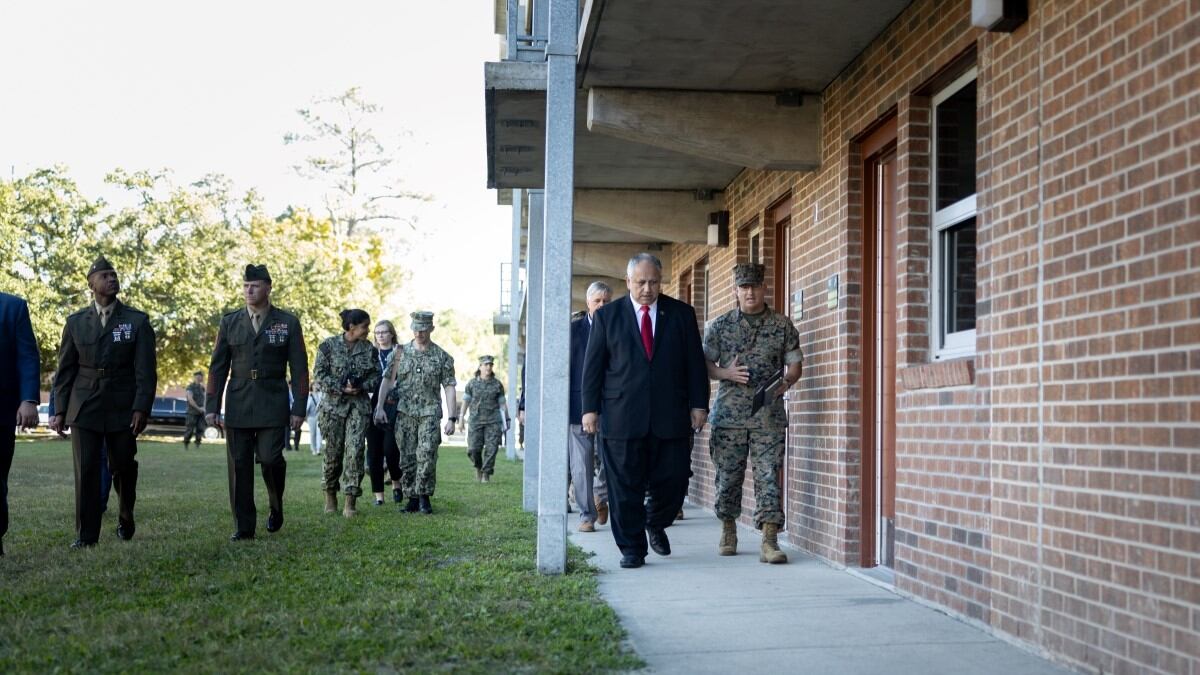Some members of Congress were critical of the low level or lack of new construction for barracks and family housing for Marines in a hearing Thursday, citing maintenance backlogs and quality of life issues among the troops.
“I am extremely disappointed to say the least in the lack of quality-of-life projects in the budget request this year,” Rep. Debbie Wasserman Schultz, D-Florida, said in a House appropriations subcommittee hearing. “Is there no need for new construction in these high priority areas?”
Wasserman Schultz cited a September 2023 Government Accountability Office report that showed widespread housing problems across the military services including mold, dysfunctional plumbing, no heating in the winter nor air conditioning in the summer.
The Marines have tackled some of those issues and others in the past year and in their pending budget request for fiscal year 2025 ― just not yet with new construction projects.
RELATED

Lt. Gen. Edward Banta, deputy commandant for installations and logistics, alongside Meredith Berger, assistant secretary of the Navy for installations, energy and environment, laid out the Corps’ plan.
That plan has involved the Corps long-term Barracks 2030 initiative, which saw a 100% wall-to-wall barracks inspection recently conclude. Banta said that the Corps is awaiting the results of that survey to better understand the state of the 658 barracks buildings the Marine Corps has in its inventory.
An estimated 87,000 Marines live in barracks.
Broadly, Banta said, about 83% of those buildings are in “pretty good shape” and 17% are not.
The Corps has requested $274 million in the current budget to fix facility problems. It has added another $65 million to its “unfunded priorities list,” which services use to draw congressional attention to items that could use more funding but didn’t make the cut.
But even the total amount pales compared with what the service needs to bring barracks up to “good/fair” condition.
Rep. Sanford Bishop Jr., D-Georgia, noted that the Corps has a $15.8 billion maintenance backlog and will require $1.5 billion annually for barracks maintenance concerns.
“This reveals a significant budget gap,” Bishop said.
Banta acknowledged the disparity and said the Corps is prioritizing restoration and modernization as it determines which barracks to maintain and which to demolish. The service has requested $61 million for planning and design for future barracks and other military construction.
Separately, Sergeant Major of the Marine Corps Carlos Ruiz addressed housing concerns in remarks Monday at the Navy League’s Sea-Air-Space conference near Washington.
Ruiz noted that in previous years the Corps has opted to spend its money on new weapons and platforms instead of infrastructure needs.
That’s changed.
“We’re transparent with that: Decisions were made not to invest in your buildings because we needed to buy these platforms in order for you to come home, in order for you to win,” Ruiz said at the conference. “But now it’s the time to do both. And it’s OK to ask for both.”
In written remarks and comments at a House hearing Wednesday on the total Navy and Marine Corps budget, Commandant Gen. Eric Smith outlined some of what’s been done so far with housing.
The Corps looks to implement civilian management of its military housing by October, which would put civilian managers over each of the barracks buildings in the next two years.
That would return more than 500 Marine noncommissioned officers currently serving as barracks managers to their primary military jobs, Smith wrote.
The service has averaged more than $200 million spent annually in barracks restoration and modernization in recent years, Smith wrote. It renovated 30 barracks buildings in fiscal years 2022 and 2023 and requested funding for renovations on 13 more buildings in fiscal 2024.
Todd South has written about crime, courts, government and the military for multiple publications since 2004 and was named a 2014 Pulitzer finalist for a co-written project on witness intimidation. Todd is a Marine veteran of the Iraq War.




